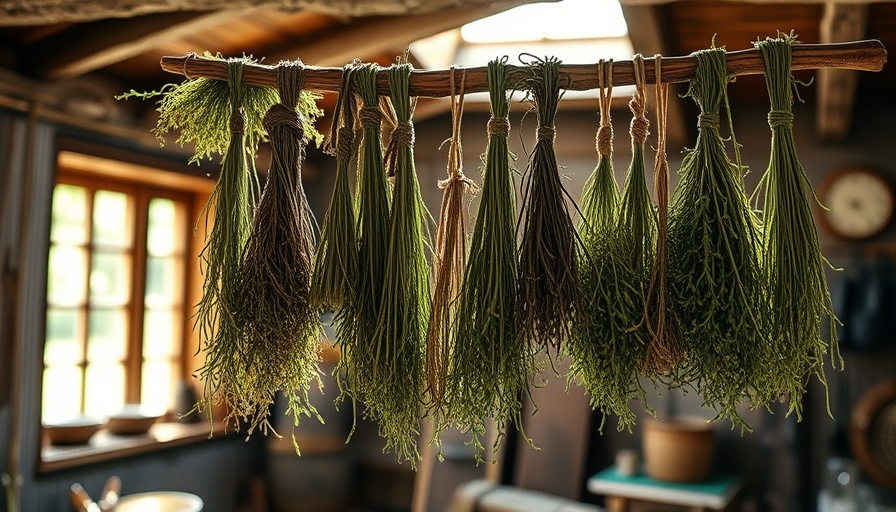
Maximizing Your Herb Garden: A Guide to Drying and Storing
Congratulations! You’ve successfully nurtured a bountiful herb garden, filled with fragrant basil, savory sage, and aromatic thyme. As the growing season comes to a close, it’s time to learn how to dry and store those luscious herbs for use throughout the year. Preserving herbs not only saves money but also infuses your dishes with fresh flavors well into the colder months.
The Importance of Drying Herbs
Drying herbs is an ancient practice that echoes the wisdom of generations past, ensuring that the essence of summer can grace our kitchens long after the harvest. But why is drying such an essential skill for any home cook or gardener? When you dry herbs, you concentrate their natural oils and flavors, allowing you to enjoy their taste without the risk of spoilage. It’s an age-old technique that enables sustainable living and minimizes food waste, aligning with the growing trend towards organic gardening and responsible consumption.
Methods of Drying: What’s the Best Approach?
There are numerous methods to dry herbs, each with its unique advantages:
- Air Drying: This is one of the simplest methods. Hang your herbs upside down in a cool, dry place away from direct sunlight. While it’s free and easy, it can take longer, often several days.
- Using a Dehydrator: For those who prefer a quicker option, dehydrators are a fantastic investment. They allow you to control temperatures (ideally around 90 to 110°F), maintaining flavor integrity while speeding up the drying process.
- Oven Drying: This method is often faster than air drying, but be cautious—most ovens don’t operate below 175°F, which can lead to loss of flavor. If you choose this approach, keep the door slightly ajar to ventilate and check frequently.
- Microwave Drying: Surprisingly, microwaves can also be effective for drying herbs if used correctly. Place herbs between two paper towels and microwave them in short bursts, checking until they are fully dried.
Harvesting for Success: When and How to Cut
Effective harvesting is crucial to ensure your herbs dry well. Start by watering the day before to ensure plants are hydrated, which helps them maintain flavor during drying. When cutting, try to do so in the morning after the dew has evaporated for optimal flavor preservation. Remove any damaged or wilted leaves, and aim for healthy stems to aid the drying process.
Storing Dried Herbs: Seal in Freshness
Once your herbs are dried, it’s time to think about storage. Store dried herbs in airtight containers in a cool, dark place; glass jars or metal tins work great. Proper storage not only keeps their flavor intact but also extends their shelf life significantly. A well-stored batch can last for several months up to a year!
Why Herb Drying is Essential for Gardening Enthusiasts
Learning to dry herbs is a valuable skill in the world of gardening and sustainability. It reinforces a connection to what you grow, making you more mindful about your own food sources. Plus, having dried herbs readily available means you’re always a step closer to preparing delicious meals, even in the off-season. By preserving your harvest, you also contribute to the local and global effort to reduce food waste, a core tenet of sustainable living.
The Joy of Experimenting with Herbs
Don’t be afraid to experiment! Mix dried herbs to create personalized blends for specific dishes. The possibilities are endless, from pizza seasonings with oregano and basil to herbal tea infusions with dried mint and chamomile. Each creation reflects your unique garden experience and enhances your culinary adventures.
Future Trends in Home Gardening
As we continue to embrace sustainability and organic practices, the trend toward home herb gardens will likely grow. With more people cooking at home and seeking to minimize their carbon footprints, having a herb garden becomes invaluable. It promotes not only culinary creativity but also health, as fresh herbs can contribute nutritional benefits.
In conclusion, preserving your herb garden doesn’t just extend enjoyment; it’s a testament to a lifestyle choice that champions sustainability and health. Now that you know how to dry and store herbs effectively, it’s time to elevate your culinary skills and embrace all that your garden has to offer. Start by experimenting with a small batch, and before you know it, you’ll be a master of herb preservation!
 Add Row
Add Row  Add
Add 




Write A Comment